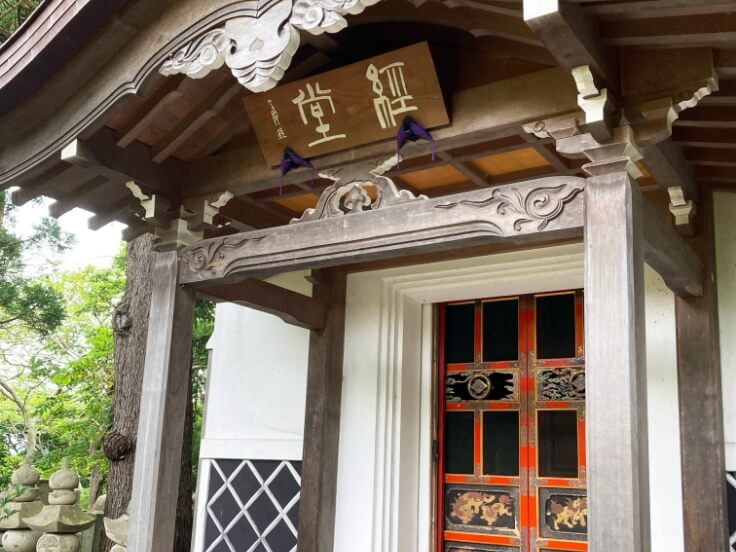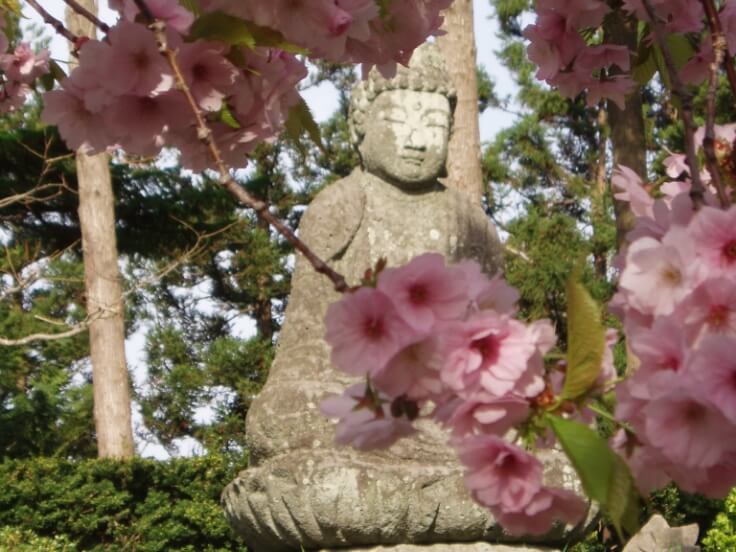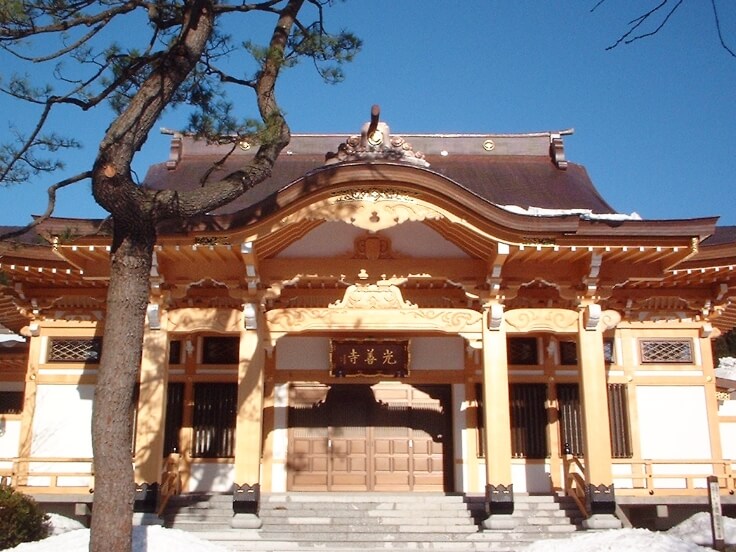

Walking in the precincts
Click on numbers for more information



Inside the Main Hall
Main Hall
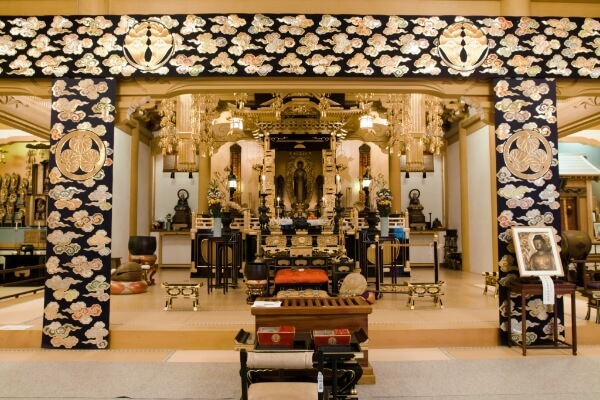
Kouzenji Temple was burned down three times in 1808, 1837, and 1903, and each time the main hall was destroyed by fire. After the fire in the Meiji period, the main hall remained in a temporary state for about 100 years, but in 2001, the 31st abbot of the temple succeeded in building a new main hall.
Statue of Buddha in the center
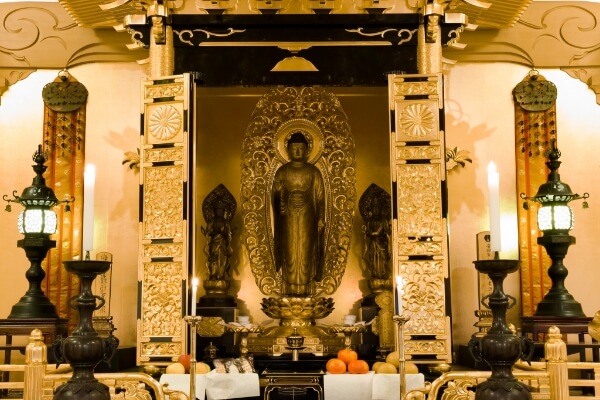
It was built in the Heian period.
Designated as a Hokkaido Tangible Cultural Property.
“Sanju San Gen Do”
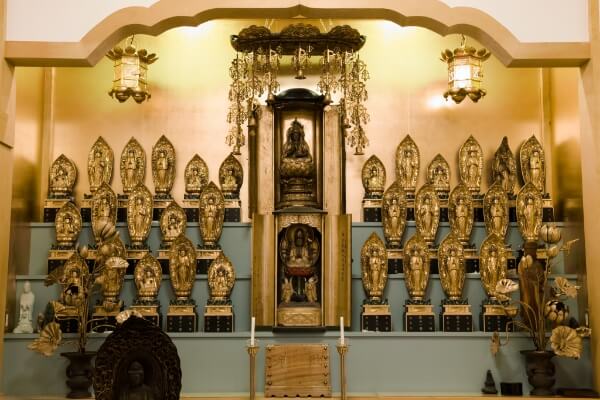
Located on the left side of the main hall.
“Kano Gosha Inari Daimeijin”
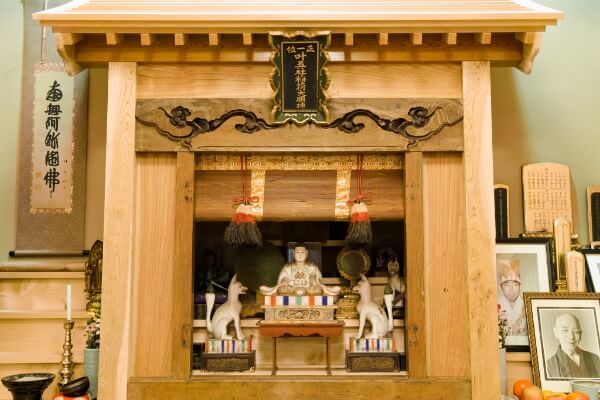
Located on the right side of the main hall
Stroking Buddha
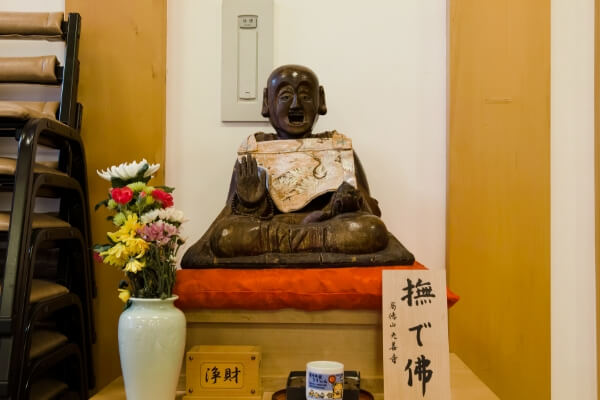
It is said that the part of the body stroked will improve.
Stone Buddha

Jizo Bosatsu Bou (Jizo Bodhisattva). It has existed since the Edo period. Behind it is a place to store grain.
Building tag

All were painted in the Edo period. They are still beautifully preserved today.
Dragon and cloud paintings
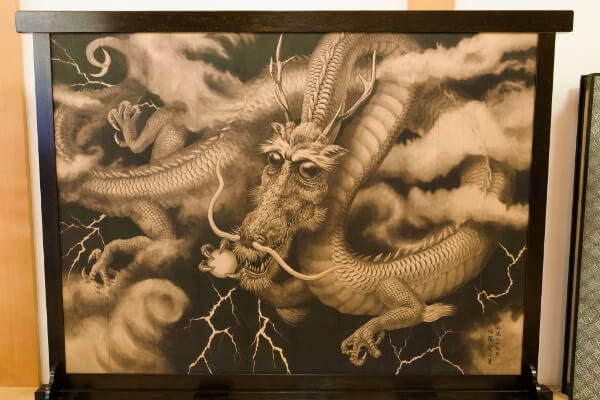

Painted by Japanese painter Kozo Sato in 2014. It was painted directly on a solid Japanese cypress board in sumi ink. The commission was accepted because Mr. Sato's mother's family lived next door to Kouzenji Temple.
An article about the painter Mr. Sato is installed next to the ceiling painting.




